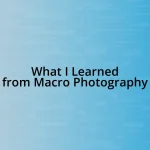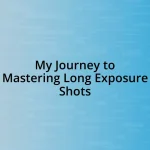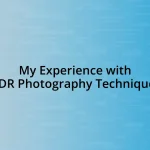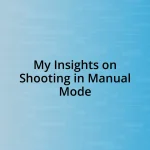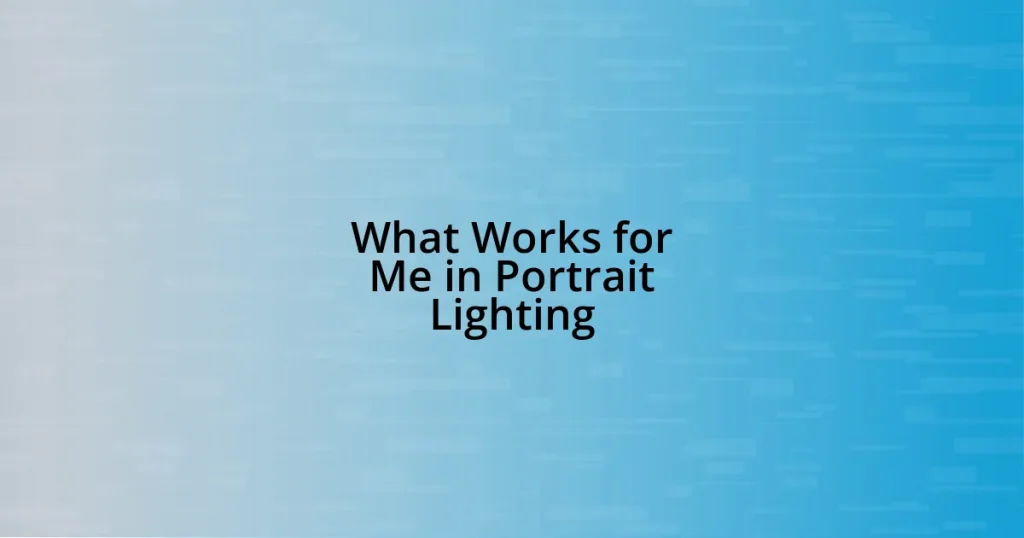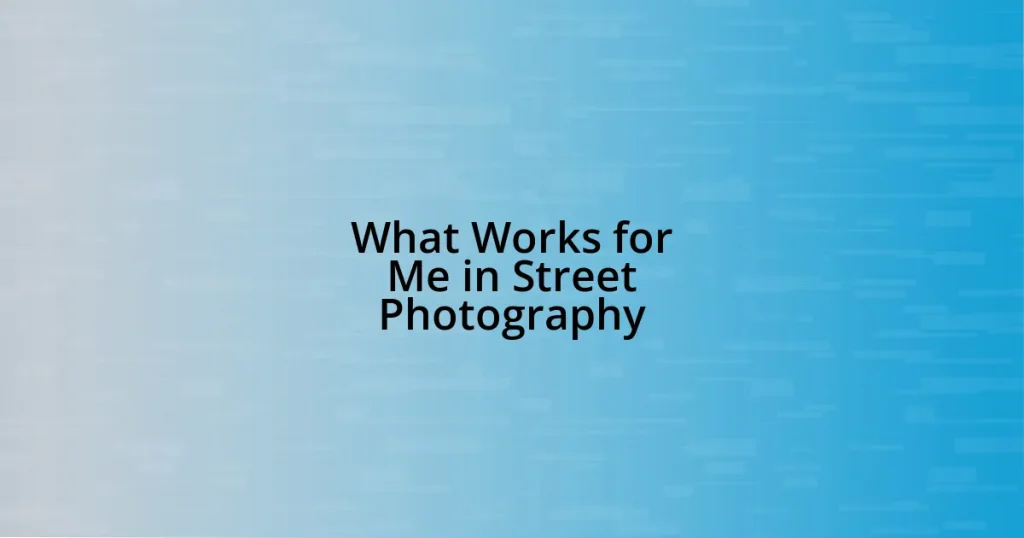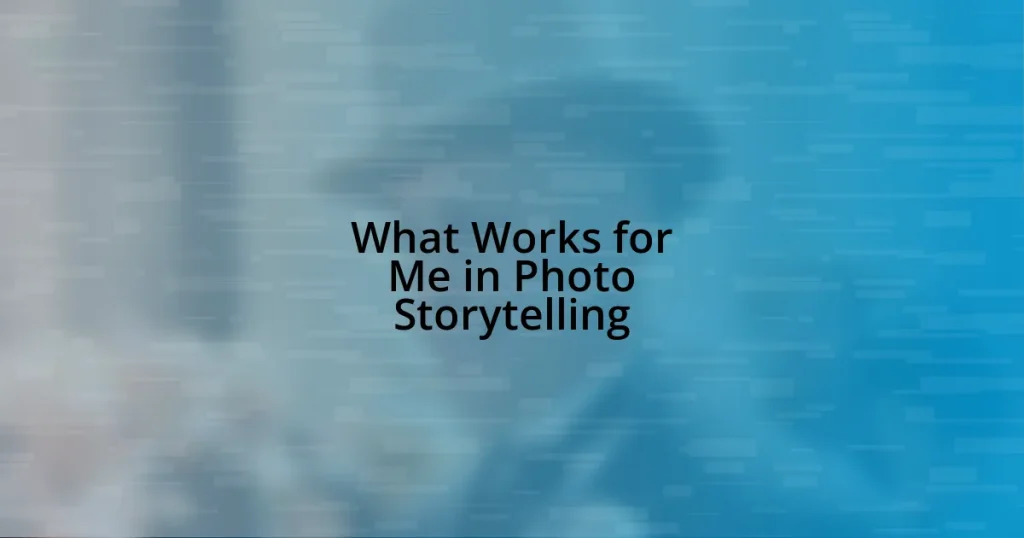Key takeaways:
- Dynamic photography captures movement and energy, evoking emotions and stories within a single frame.
- Key elements for dynamic composition include leading lines, contrast, framing, motion blur, and strategic subject placement.
- Techniques such as panning, burst mode, and dynamic framing enhance the sensation of movement in photographs.
- Effective use of light and shadow, along with thoughtful angles and editing, can significantly elevate the impact of dynamic images.

Understanding dynamic photography
Dynamic photography is all about capturing movement and energy in a single frame. I remember the thrill I felt when I took my first shot of a dancer mid-leap—it was as though time stood still, and I could feel the energy radiating from the image. Have you ever experienced that exhilarating moment when you press the shutter and realize you’ve captured something truly alive?
When I think of dynamic photography, I can’t help but consider how it conveys a story without any words. For instance, capturing a bustling city street during rush hour or a child playing with a dog can evoke emotions that resonate deeply within us. The blur of motion against a sharp focal point creates a narrative, allowing viewers to feel part of that moment. How do you think a single image can encapsulate a whole experience, leaving a lasting impression?
It’s fascinating how making slight adjustments with settings like shutter speed can dramatically alter the photo’s energy. I often play with slower shutter speeds to create that beautiful motion blur when shooting bike races—just that extra bit of experimentation opens a whole new world of dynamic imagery. Each click of the camera becomes a discovery, a leap into the unknown, which keeps me excited about every shoot.

Key elements of dynamic composition
To create a truly dynamic composition, several key elements come into play. One of the most impactful aspects is the use of leading lines, which guide the viewer’s eye throughout the image. I often find myself searching for natural or architectural lines in my surroundings; they can make the viewer feel as if they are entering into the scene. When I captured a sunset over a winding road, the lines of the pavement drew my gaze toward the horizon, adding depth and inviting exploration of the story behind the photo.
- Leading Lines: Draw the viewer’s eye into the photograph.
- Contrast: Use light and shadow to highlight movement or emphasize a focal point.
- Framing: Use elements within the scene to create a natural frame that enhances the subject.
- Motion Blur: Allow purposeful blur to convey speed and energy.
- Subject Placement: Position the main subject off-center for a more engaging composition.
Another crucial element is the resolution of tension within the frame. I vividly recall capturing a soccer match where the players were poised at the edge of a jump. I carefully composed the shot so that the players were dynamically placed, creating a sense of imminent action. This tension gives a photo its energy, making the viewer feel like they’re right there, about to shout with excitement. Balancing all these elements can transform a good shot into a striking visual story that resonates on an emotional level.
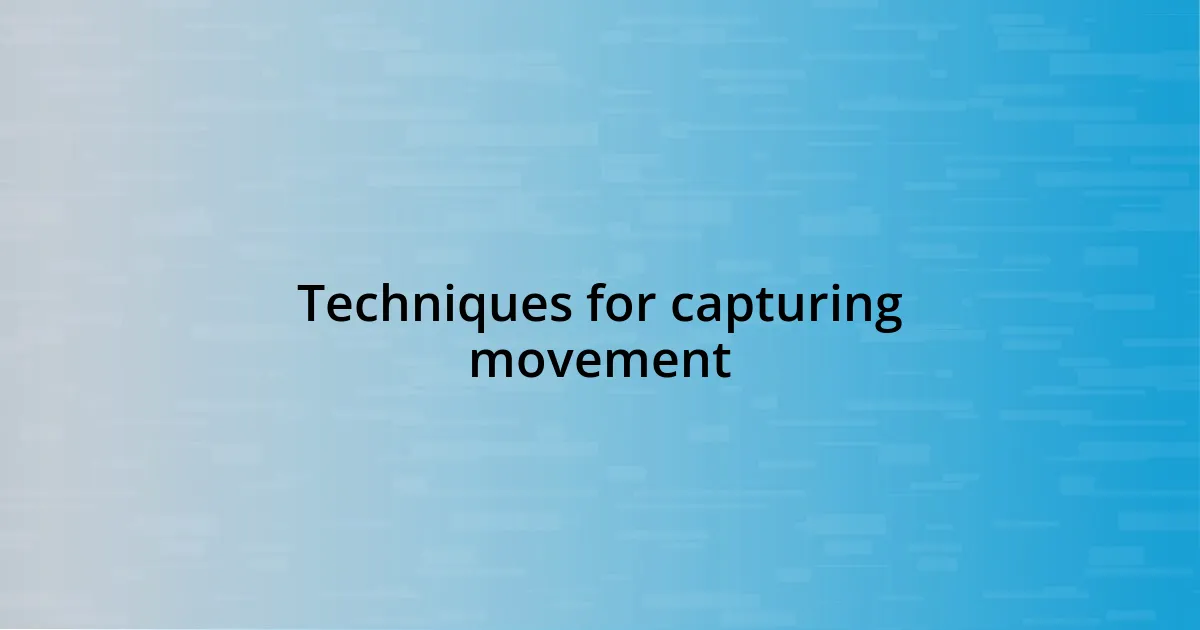
Techniques for capturing movement
Capturing movement in photography is truly an art form. One technique I often use is panning, where I follow the subject with my camera while keeping the shutter open. This method allows the moving subject to remain sharp against a blurry background, creating a sense of speed and dynamism. I remember the first time I panned while photographing a motorcycle race. The roar of the engines and the wind rushing by made my heart race, and when I reviewed those images afterward, I couldn’t help but smile at how alive they felt.
Another effective approach is to use burst mode, which allows you to take several shots in quick succession. It’s almost like a visual storytelling tool. Once, while photographing a bird in mid-flight, I triggered the burst mode just as the bird took off. To my amazement, one of the photos captured the wings perfectly spread, frozen in time yet full of movement. This technique can be especially useful in unpredictable scenarios, helping you decide later which frame captures the essence of the action best.
Let’s not overlook the power of framing your subject creatively. I find that including elements that suggest motion, such as blurred trees or flowing water, can enhance the feeling of dynamism. One memorable shot I took involved a runner racing past a row of trees. Those blurred lines of greenery juxtaposed against the sharp image of the athlete created an invigorating sense of speed. It made me reflect on how movement isn’t just about the subject but also about the surrounding environment.
| Technique | Description |
|---|---|
| Panning | Following a moving subject to keep it sharp against a blurred background. |
| Burst Mode | Taking multiple images in quick succession to catch the perfect moment. |
| Dynamic Framing | Including elements suggesting motion to enhance the sense of action. |

Using light and shadow effectively
Light and shadow can dramatically alter the mood of a photograph. I remember standing on a beach at dawn, captivated by how the soft light painted everything in warm hues. The long shadows cast by the dunes created a sense of depth, making the image feel more three-dimensional. Have you ever noticed how certain shadows can evoke feelings of mystery or nostalgia? I certainly have, and it pushes me to explore contrasting elements in my compositions.
Balancing light and shadow isn’t merely an aesthetic choice; it can also direct how a viewer engages with the subject. When I was photographing an old, weathered barn at sunset, the sun’s rays illuminated the wooden beams while shadows accentuated the barn’s rugged texture. This interplay not only guided the viewer’s eye to the barn’s details but also invoked a sense of timelessness, as if the structure had stories to tell. Do you think about how shadows can speak to a photograph’s narrative? I feel that’s where the magic happens.
Sometimes, the right amount of contrast can transform an ordinary image into something spellbinding. While shooting street scenes, I’m often drawn to moments when the sun breaks through the clouds, casting dramatic shadows on the pavement. I remember one instance where I captured a bustling market scene just as the light hit an array of colorful fruits, accentuating their vibrancy while shadows danced around them. It reminded me how powerful light can be in elevating a photograph from simple documentation to a compelling story.

Selecting the right angles
Selecting the right angles can make all the difference in how dynamic a photograph feels. I often experiment with low angles, framing my subjects from below to imbue them with a sense of power and dominance. For instance, when I photographed a dancer leaping mid-air, crouching low allowed me to capture not only their grace but also the expanse of the stage behind them, which further accentuated the drama of the moment. Have you ever tried looking up at your subjects? It can be a game-changer.
Another angle I frequently utilize is the high shot, which provides a bird’s-eye view that adds context to the scene. I remember capturing a bustling street festival from a balcony above, which allowed me to include a whirlwind of colors and activities below. The crowd’s energy became palpable, and that elevated perspective offered a unique narrative. Isn’t it fascinating how changing your viewpoint can transform the entire feel of a photo? It has genuinely altered the way I convey stories through my work.
Sometimes, the magic lies in the unexpected, such as shooting from an angle that seems almost contrived. For example, I once positioned my camera upside down while photographing a skateboarder performing tricks. This unconventional perspective created a playful, surreal feeling that embodied the essence of youth and adventure. Have you considered embracing such quirky angles? Trust me; they can lead to some incredibly captivating outcomes.

Editing tips for dynamic photos
Editing plays a crucial role in making dynamic photos truly pop. One of my go-to techniques is adjusting the contrast to enhance the interplay of light and shadow. I still remember editing a photo of a cyclist racing through a sun-drenched forest; lifting the shadows made the vibrant greens of the leaves jump out, while deepening the blacks of the cyclist’s silhouette added an exciting drama. Isn’t it fascinating how a slight tweak can breathe new life into an image?
Color correction is another area I focus on to evoke specific emotions. I worked on a series of sunset landscapes, and by subtly warming the tones, I transformed a flat image into a glowing masterpiece that felt inviting. It’s almost like turning up the warmth in a conversation; you can really engage your audience. Have you explored how colors affect your photos? I find it’s essential to consider the mood you want to convey.
Finally, I love playing with cropping to direct the viewer’s eye. I was editing an action shot of a soccer game, and by cropping tighter around the players, I amplified the intensity of the moment. This technique not only highlights the emotion but also removes any distractions from the background. Don’t you think that a well-cropped image can tell a more powerful story? I believe it can completely reshape how someone experiences the photo.





